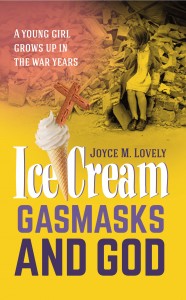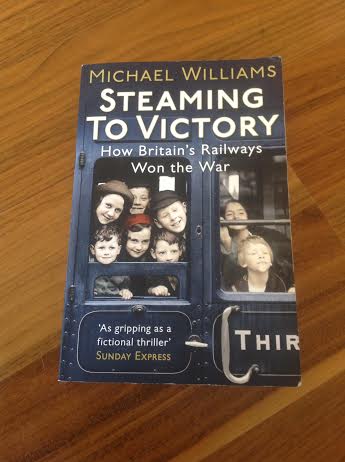Ice Cream, Gas Masks and God
A young girl grows up in the war years
By Joyce M Lovely
PUBLICATION DATE: 22 June 2015
Mereo Books www.mereobooks.com
A funny, touching and heart-warming portrait of war time and beyond, Ice Cream, Gas Masks and God is the author’s trip down memory lane to 1940s Liverpool, where early reminiscences include not just the hated gas mask, but also the regular night time spells in the air raid shelter as the bombs fell.
A beautifully drawn portrait of the place and its people, from Calder High School Joyce went on to work at the Eagle Star Insurance Company and the office of the Dunlop Rubber Factory. Missing out on being one of the first to see The Beatles perform at the Cavern Club (because she didn’t fancy the sound of them from her sister’s description!), she moved to London to study Nursing at St Bartholomew’s. Marriage took her on to the Shetland Islands – where life as a parson’s wife meant that prayer was sometimes relied upon to provide dinner – and then to the West Riding of Yorkshire, before finally settling in Maine, USA.
A natural storyteller, Joyce’s recollections of people, places and events are effortlessly recounted. From the exotic neighbour who had been in the German Resistance (but whose priority was now pudding) to her splendid Spirella Corsetier grandmother, Ice Cream, Gas Masks and God is a gentle, fascinating and humorous personal history, rich in colour and detail.
Gloriously nostalgic and beautifully written, this is the perfect summer read.
Sneak preview extracts
“Jerry made one heck of a mess here, didn’t he?” said Dad. “And all my best willow pattern china has been smashed” Mum sniffed, trying not to cry again. Dad put his arm around her. “Don’t worry, love. We’ll get through this.” And we did, even though I heard a few days later that eight people had been killed in their air-raid shelters, along with many others, including some in the public shelters. Much later I learned that 2000 Liverpudlians had been killed in just that week, with thousands more injured and homeless.
I sat stunned. First I felt the pricking of tears, and then I began to laugh. There lay my ancient, despised, childhood World War II gasmask. It rested there staring at me eerily, the eyepiece still displaying the oval sickly-brown cellophane, which wasn’t even cracked. I sat back. My eyes closed, and the memories streamed back…
I remember vividly growing up in Liverpool, amidst air raids, bombs and gasmasks. My story is from a childhood perspective, leaving the grown-ups to worry about battles and shortages. We observed strict morals as a teenager in the fifties, yet still had boyfriends, stolen kisses and fun. This memoir concludes with my marriage to a minister and our adventures in the distant Shetland Islands. Here I experienced the islanders’ expectations of ‘yon minister’s wife’ often resulting in unexpected humorous consequences…
Humour, tenacity, sharing and resourcefulness, especially by the women on the home front, kept life normal for us children. We laughed, cried, hoped and dreamed, but we never asked for more than what we knew was around us.
About the author
Born in Liverpool, Joyce M Lovely now lives in Maine, USA. She has had numerous articles and stories published in magazines and periodicals and she is a member of a writing group. Joyce worked in education for many years, as a teacher and then later in administration, working with teachers and leading workshops.







